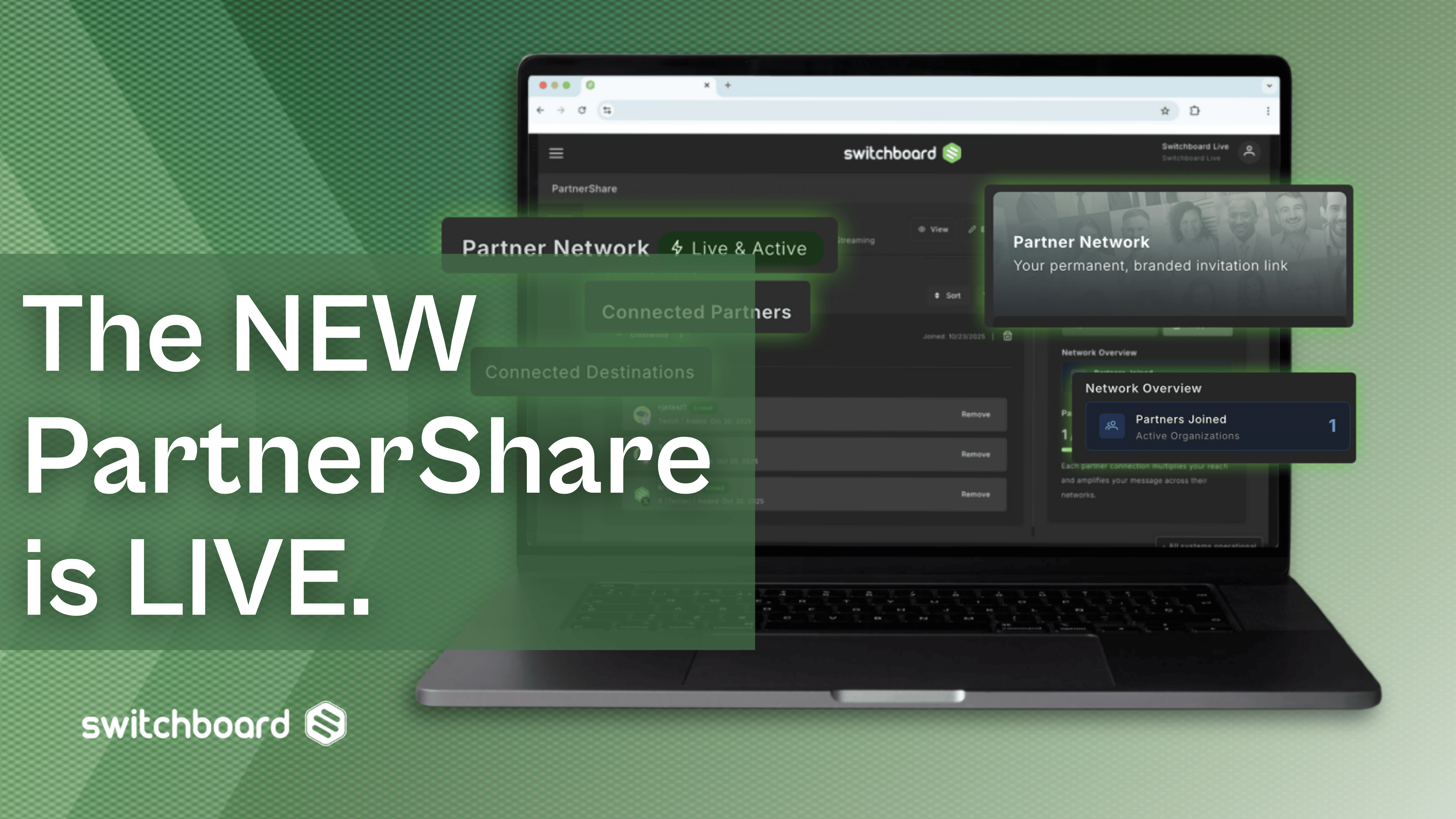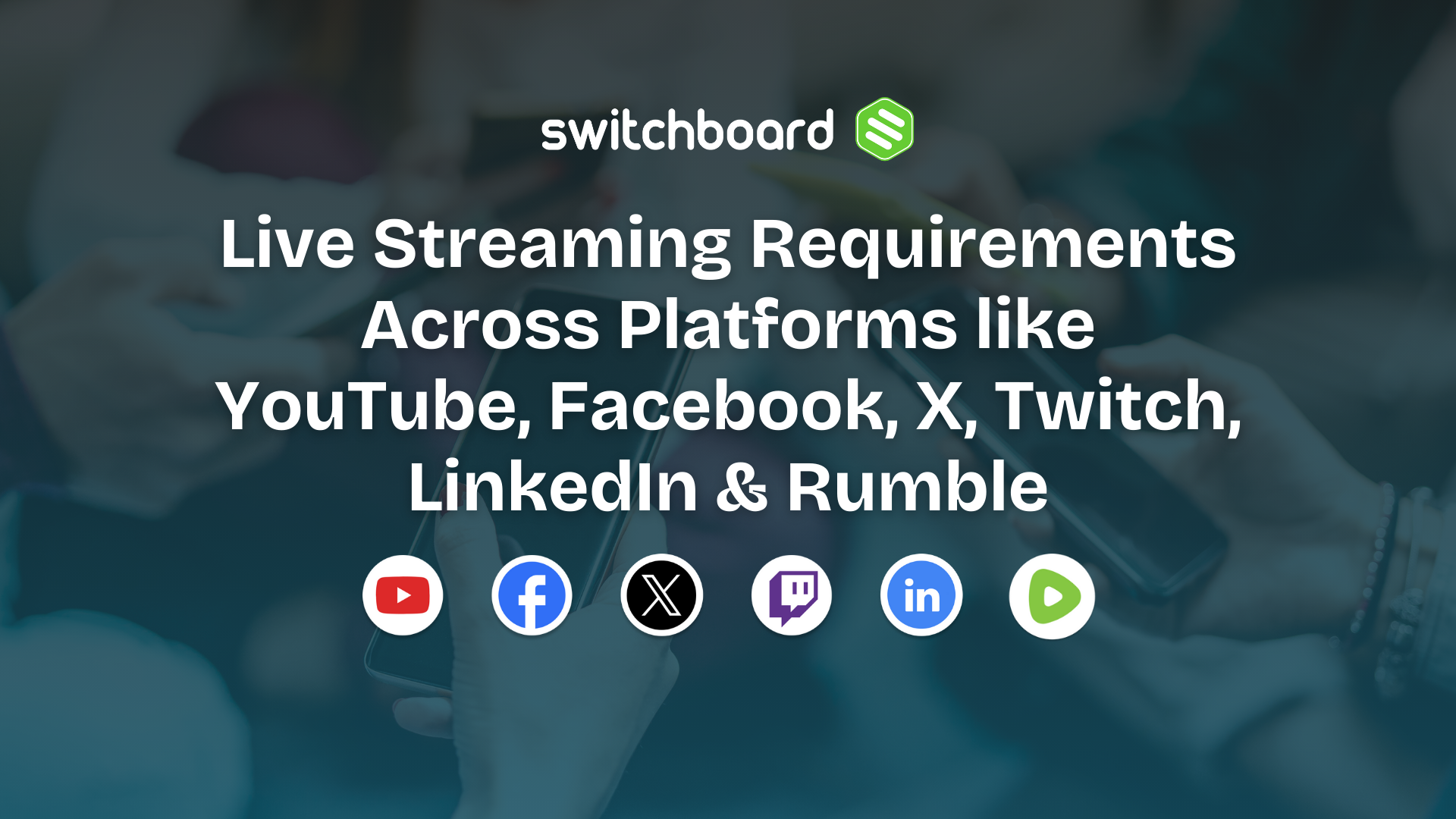In an effort to simplify what has become everyday terminology for those that livestream, we wanted to offer the following definitions for those that are new to the streaming space. We hope this helps!
Basic Livestreaming
What is a Livestream or Live Stream? - Frequently referred to as “streaming”, it refers to online streaming media simultaneously recorded and broadcast in real-time.
What is Multistreaming? - Streaming one piece of live content to multiple destinations at the same time. (See Also Multipublishing or Simulcasting)
What is Multipublishing? - Streaming one piece of live content to multiple destinations at the same time. (See also Multistreaming or Simulcasting)
What is Simulcasting? - Streaming one piece of live content to multiple destinations at the same time. (See also Multistreaming or Multipublishing)
What is a Video Conference? - A technology that allows users in different locations to hold face-to-face meetings without having to be in a shared location.
What is Social Media? (often used interchangeably with Destinations) - Various channels for large groups of people to communicate and share information over the internet.
Livestreaming Components
What is an Encoder? - An app or device that converts analog or digital video into streaming video for delivery to streaming platform. Examples include: Ecamm Live, OBS, Streamlabs, vMix, SwitcherStudio, Zoom, LiveU, ManyCam, Larix, etc.
What are Destinations? - Any end point where video can be accepted and viewed, for example:
• What is Facebook? - A social networking site, originally designed for college students, that connects family and friends online through posts, video, and image sharing. Facebook is the world's largest social network, with more than 1 billion users worldwide.
• What is Twitter? - A microblogging service for friends, family, and coworkers to communicate and stay connected through the exchange of quick, frequent messages. People post “Tweets”, which may contain photos, videos, links, and text.
• What is YouTube? - A video sharing website that makes it easy to watch online videos. Users can create and upload your own videos to share with others. Over 6 billion hours of video are watched every month.
• What is Twitch? - A live-streaming platform for gamers and other lifestyle casters that supports building communities around shared and streamable content, such as video games.
• What is LinkedIn? - An online platform that connects the world's professionals where users can showcase their professional life, milestones, skills and interests.
What is a Workflow? - The control center for multistreaming. This includes the confidence monitor, video encoder details, real-time stream information, destinations, and metadata.
What is Video Source? - The location of where the video originates.
What is an Embedded HTML5 Player? - An incorporated video player on your website to showcase your live stream directly.
What is an API? - Stands for Application Programming Interface. Switchboard has built an API for third-parties to integrate with its platform to access its robust multistreaming functionality.
What are Platforms? - Refers to the destinations where video can be sent from. (see Destinations)
Inside Switchboard
What is StreamShare? - Allows others to opt-in and carry your stream to be viewed by their audience, thereby increasing your viewership.
What is Latency? - The delay between your encoder and the stream being displayed to viewers.
What is RTMP? - A live streaming protocol that transmits video files from an encoder to a video hosting platform
What is a Stream Server/Ingest Point? - Geographically located servers that receive the stream from an encoder for multistreaming to streaming destinations.
What is a Stream Key? - A unique key that is dynamically generated to allow an incoming stream to be accepted by our ingest zones.
What is a Bit Rate? - The number of bits that are conveyed or processed per unit of time, typically shown in seconds, or Bits Per Second. The higher the bit rate the higher the quality of video.
What is Resolution? - Simply one of many encoder settings that can be used to control the quality of the stream. This is also referred to as aspect ratio as well. Most encoders allow settings of 1080p, 720p, 480p, 360p and 240 pixels (height) and corresponding width as the resolution setting. In order to achieve optimal performance you need to coordinate the bit rate of the stream in relation to the resolution to reduce buffering and maintain quality levels. Here is a support article that we produced showcasing the common bit rate & resolution combinations.
What is a Codec? - Stands for “coding/decoding.” A codec is a process that reduces digital file sizes by reducing unnecessary data, while retaining as much quality as possible.
What are Packets Received? - A packet is a small amount of data sent over a network. When packets reach their intended destination, they are reassembled into a single file or data block.
What are Bits? - A bit (short for "binary digit") is the smallest unit of measurement used to quantify computer data.
What are Bits Received? - The total amount of Bits received through Switchboard for your stream.
What is a Confidence Monitor? - A live preview display that verifies the current video that is being received by Switchboard from a connected Encoder.
What is a Bandwidth? - The maximum amount of data transmitted over an internet connection in a given amount of time.




.png)
.png)
.png)





